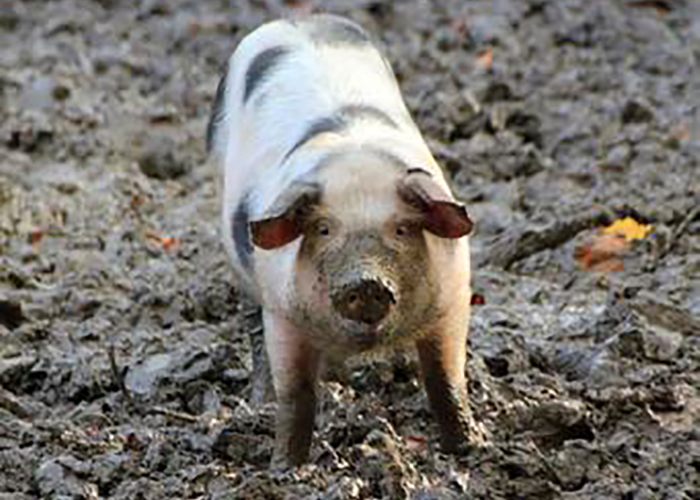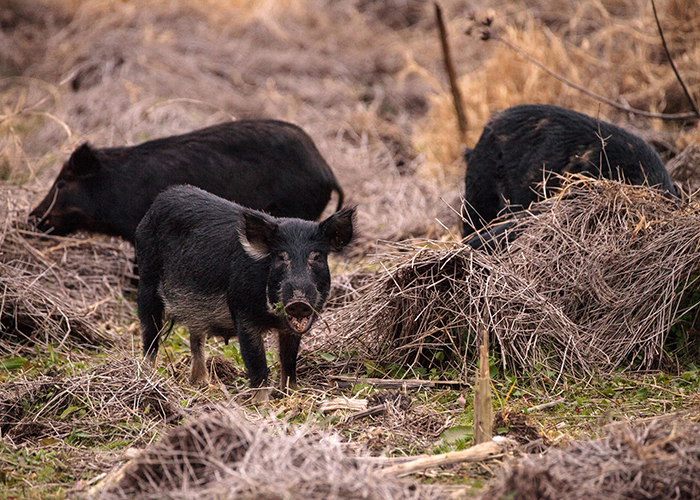WILD PIG
HABITAT
DESTRUCTION
CITY PIG, COUNTRY PIG
Feral hogs cause an average of $52 million of damage annually to the agricultural industry in Texas. This estimate does not account for growing feral hog damage in suburban areas. Examples of feral hog damage include but are not limited to: rooting pastures and rangeland, consumption of native vegetation, negative effects on water quality, and predation of wildlife.
Wild pigs are omnivores, generally categorized as opportunistic feeders, and typically consume between 3% and 5% of their total body mass daily. They exhibit a generalist diet consuming a variety of food sources which allows them to thrive across a wide range of environments.

$52 MILLION
IN USD: YEARLY DAMAGE
OF TEXAS FERAL HOGS
WHAT'S THAT PIG EATING?
Though their range in diet is mostly herbivorous, shifting seasonally and regionally among grasses, mast, shoots, roots, tubers, forbs, and cacti as resource availability changes. When available, wild pigs will select for agricultural crops, often making up over 50% of the vegetative portion of their diets and causing significant damage to agricultural fields. Invertebrates are often consumed while foraging for vegetation throughout the year including insects, annelids, crustaceans, gastropods, and nematodes. Studies have shown that, in some cases, invertebrates are highly selected for and seasonally make up over 50% of wild pig diets.
FEEDING
HABITS
IN THE WILD

- GRASSES
- INVERTABRATES
- CACTI
- ROOTS
- FARMING CROPS
- INSECTS
- SHOOTS
